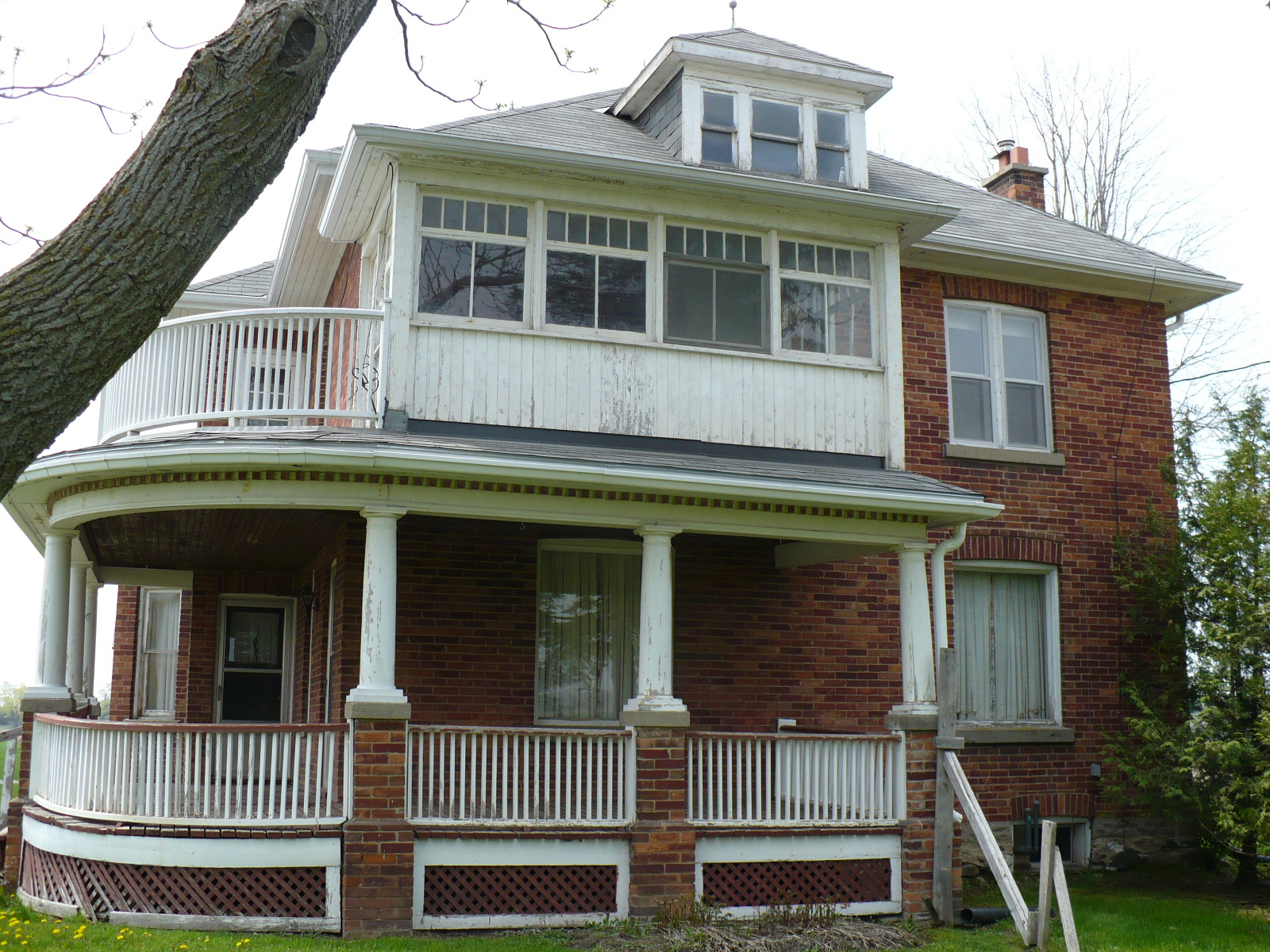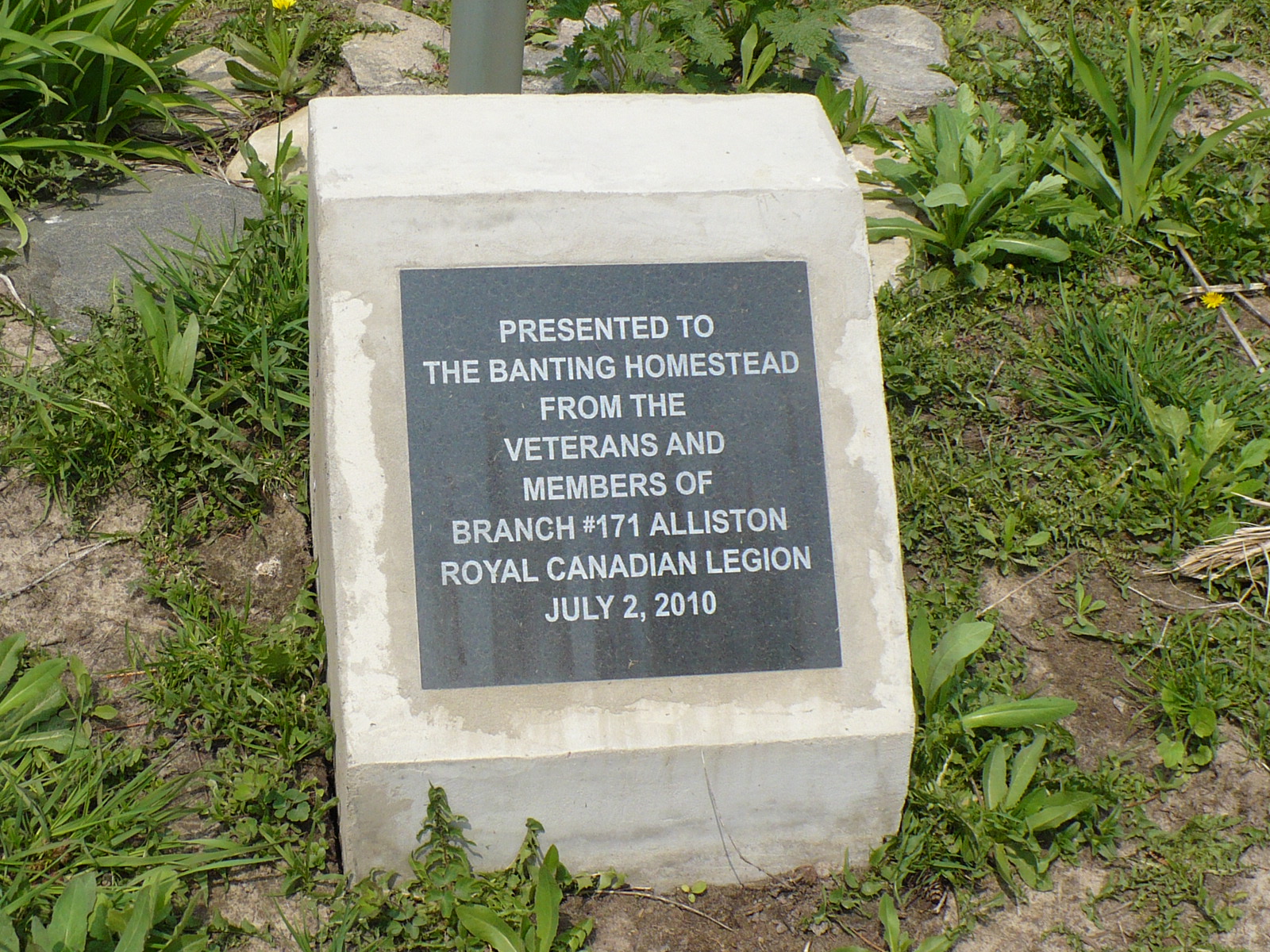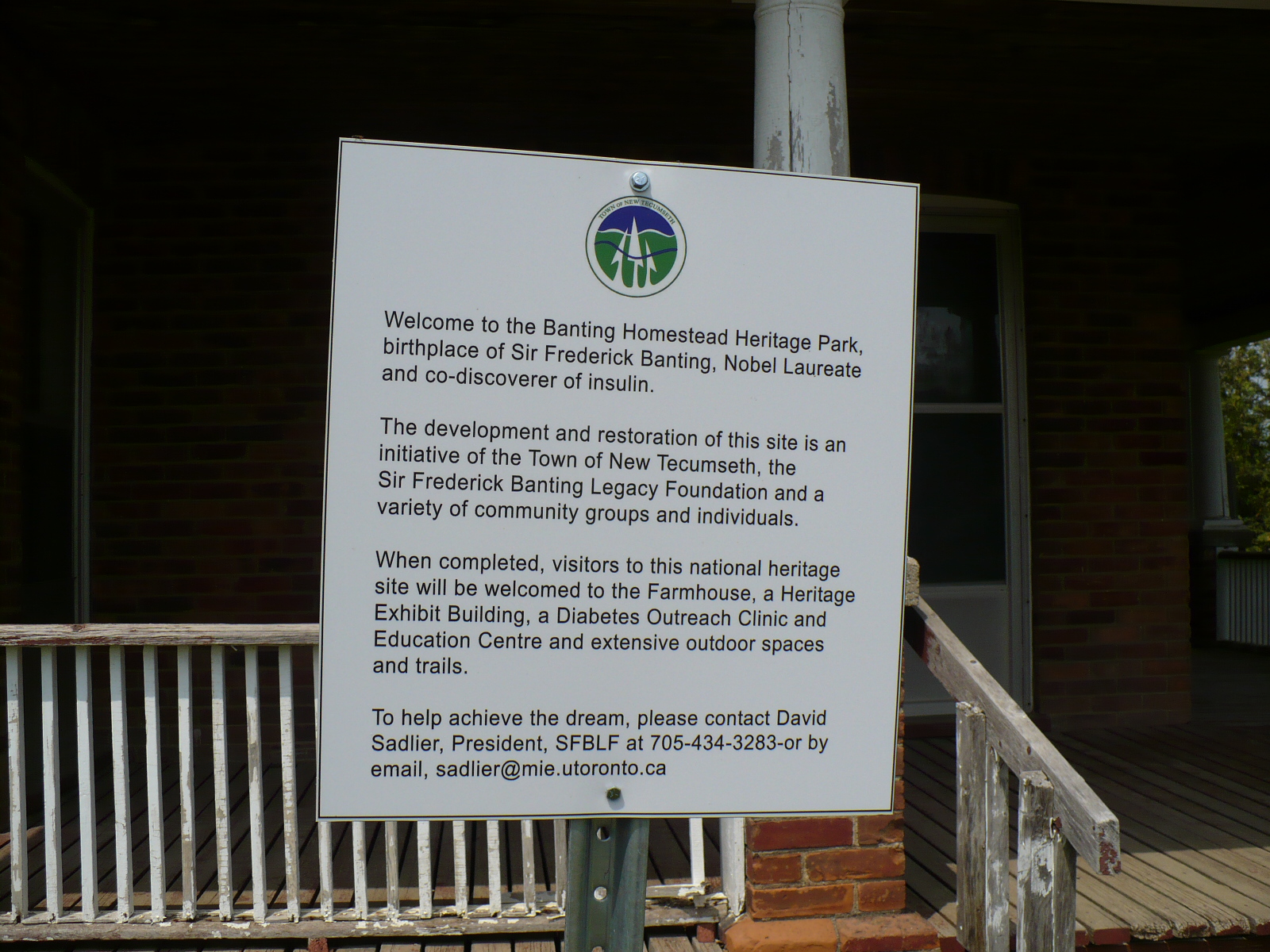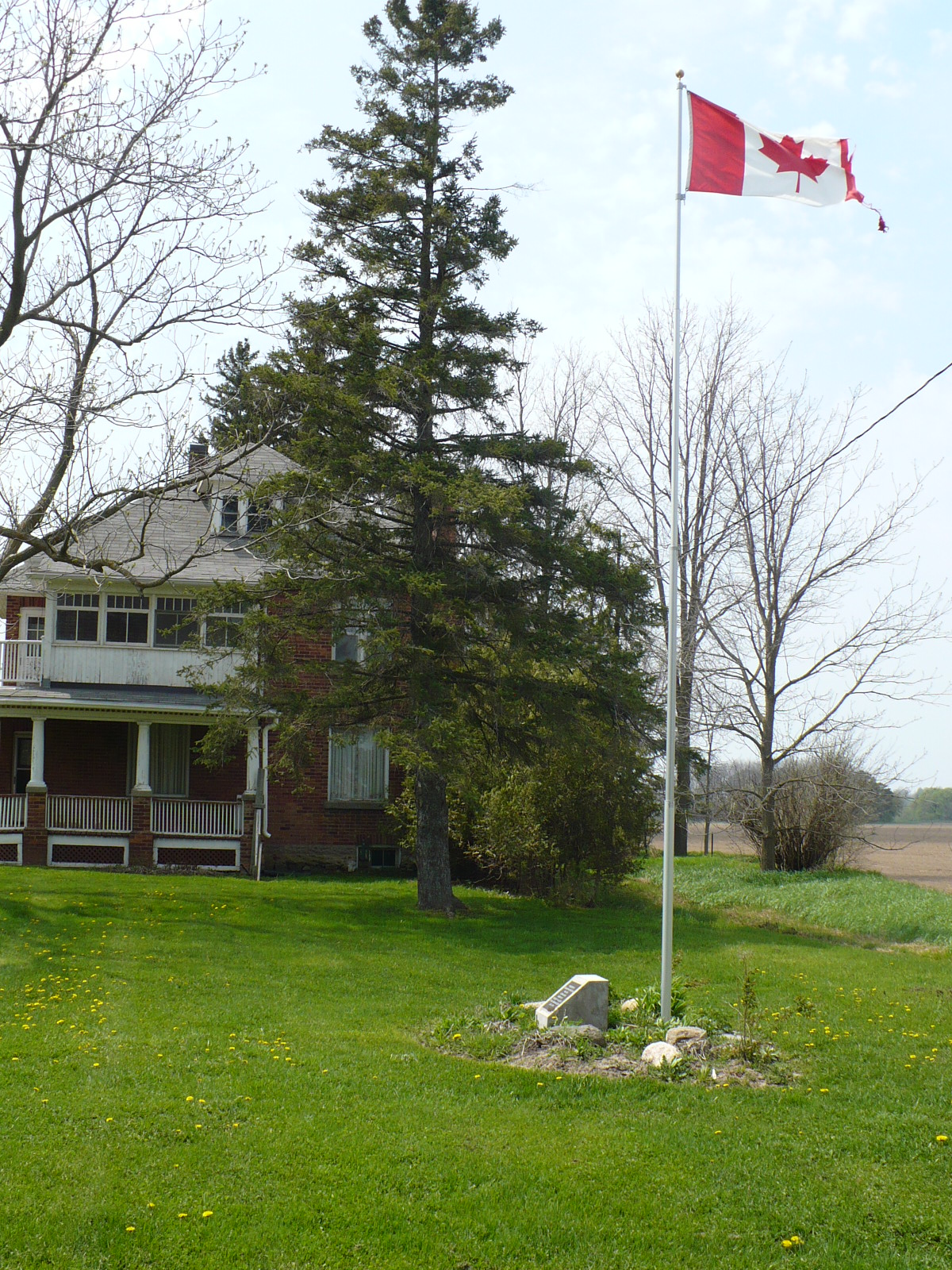In 1975, a cairn was erected on the Banting property to mark the birthplace of Sir Frederick Grant Banting. In 2008, the Town of New Tecumseth purchased the property and named it the Banting Heritage Park. The farmhouse officially opened to the public at the annual Banting Day/World Diabetes Day celebration held on November 10, 2012. A new Heritage Exhibit building was completed and officially opened on Banting Day, November 9, 2013. The park includes interior exhibits and a Banting Legacy exercise trail.
Banting also had an artistic career and the Banting Legacy Collection of artifacts including wood carvings, sketches, oil paintings and various memorabilia can be viewed in the historic Banting farmhouse.
Frederick Grant Banting was born on November 14, 1891, in Alliston, Ontario. He was the youngest of five children of William Thompson Banting and Margaret Grant. He began his studies at the University of Toronto intending to enter the ministry, but instead switched to medicine and received his M.B. in 1916 accelerated because of the war. After graduating, he joined the Royal Canadian Army Medical Corps and served as a medical officer during the First World War. In August of 1918, he was wounded at the Battle of Cambrai and in September took over treatment of his own forearm wound to avoid its amputation. In 1919, he was awarded the Military Cross for heroism under fire, attending to wounded soldiers even while he himself was wounded.
After the war, he was Resident Surgeon at the Hospital for Sick Children, Toronto. From 1920 until 1921, he taught orthopaedics part-time at the University of Western Ontario, besides his general practice, and from 1921 until 1922 he was a Lecturer in Pharmacology at the University of Toronto. In 1922, he was awarded his M.D. degree, along with a gold medal.
Earlier, Banting had become interested in diabetes and determined to investigate it, Banting discussed it with various people. J.J.R. Macleod, Professor of Physiology at the University of Toronto, gave him facilities for the experimental work. Dr. Charles Best, a medical student at the time, was appointed as Banting’s assistant. Together, they started the work which led to the discovery of insulin.
In 1922, Banting was appointed Senior Demonstrator in Medicine at the University of Toronto and in 1923, he was elected to the Banting and Best Chair of Medical Research. He was appointed Honorary Consulting Physician to the Toronto General Hospital, the Hospital for Sick Children, and the Toronto Western Hospital.
In addition to his medical degree, in 1923, Banting obtained the LL.D. degree (Queens) and the D.Sc. degree (Toronto). The same year, he shared the Nobel Prize in Physiology or Medicine for 1923 with Macleod. He received the Reeve Prize from the University of Toronto (1922). In 1923, the Canadian Parliament granted him a Life Annuity of $7,500. In 1928 Banting gave the Cameron Lecture in Edinburgh. He was appointed member of numerous medical academies and societies in his country and abroad, including the British and American Physiological Societies, and the American Pharmacological Society. He was knighted in 1934.
Banting married Marion Robertson in 1924 and they had one child, William in 19228. In 1932 they divorced and in 1937 Banting married Henrietta Ball.
Banting was head of the University of Toronto's Banting and Best Institute for Medical Research and following the Munich conference in 1938, Banting asked his staff to familiarize themselves with problems in the field of war aviation medicine. Major A. A. James of the Royal Canadian Army Medical Corps, persuaded the very busy Banting that a research program was needed because the aircraft of had exceeded the physical capabilities of the aircrews. Banting realized the ability to fly at high altitudes would give Allied crews a tactical advantage in war, started a fund-raising program, and brought his research team together with James to focus on the most urgent medical problems.
Banting's colleague at the University of Toronto, Wilbur Franks, was researching cancer before the war and heard James explain the fighter pilots were blacking out during high-speed manoeuvres. This research led to making the first anti-gravity suit for pilots.
Sir Frederick Banting died during the Second World War, while serving as a liaison officer between the British and North American medical services. A plane crashed in a snowstorm near a frozen lake in Newfoundland. Two people on board died, Banting and the pilot, Joseph Mackey, suffered serious injuries. Mackey went for help, but Banting died before the pilot returned. Banting was on his way to England for British military support to continue development of the Franks Flying Suit. He was reportedly carrying a copy of the suit on the plane with him.



